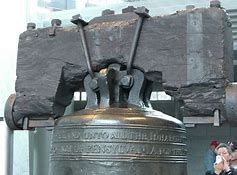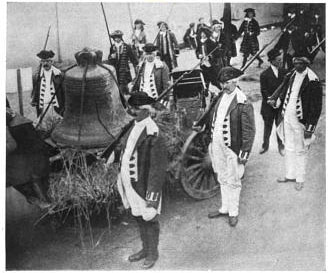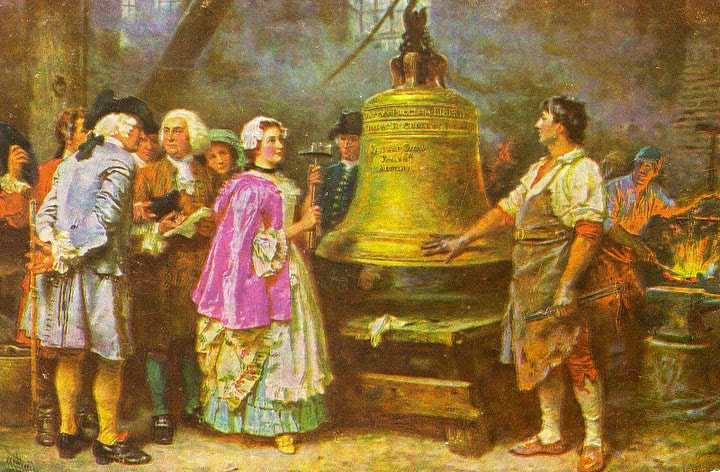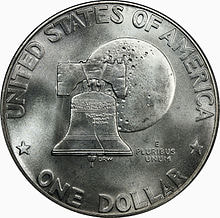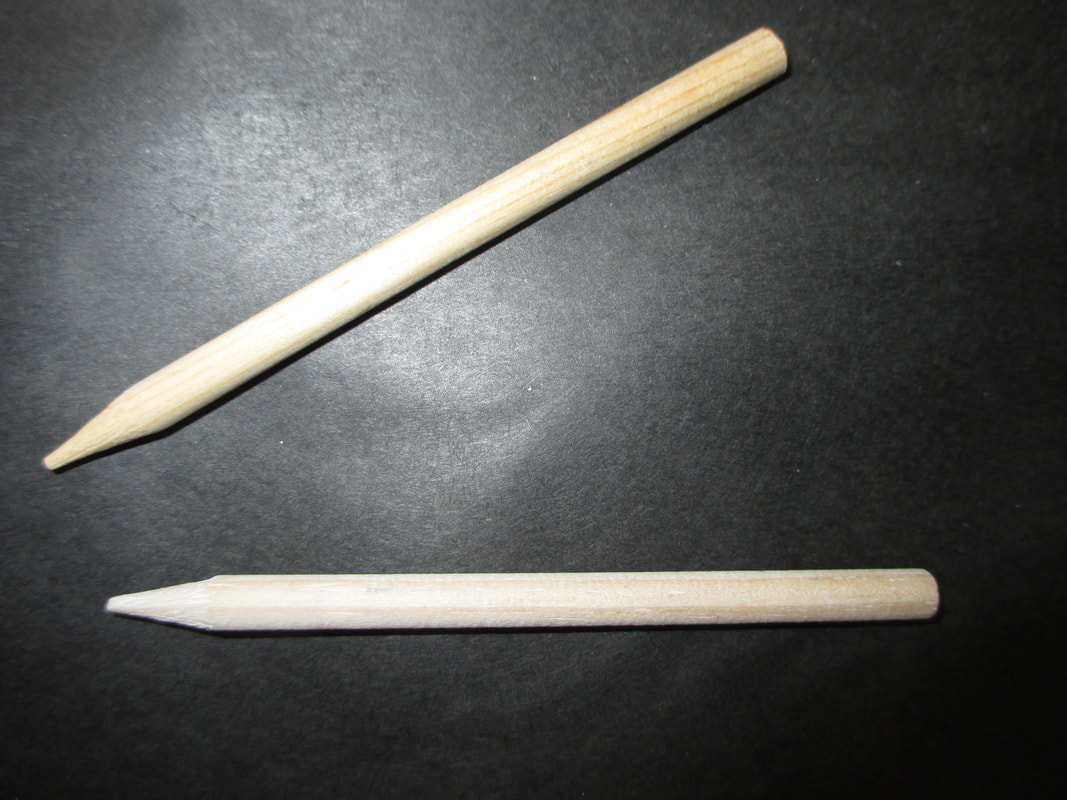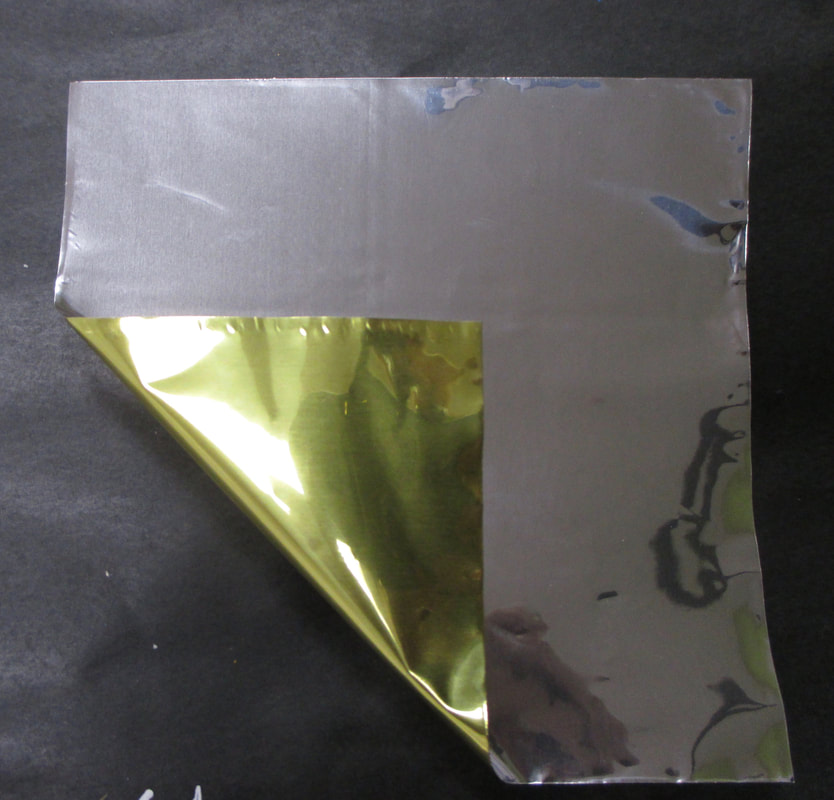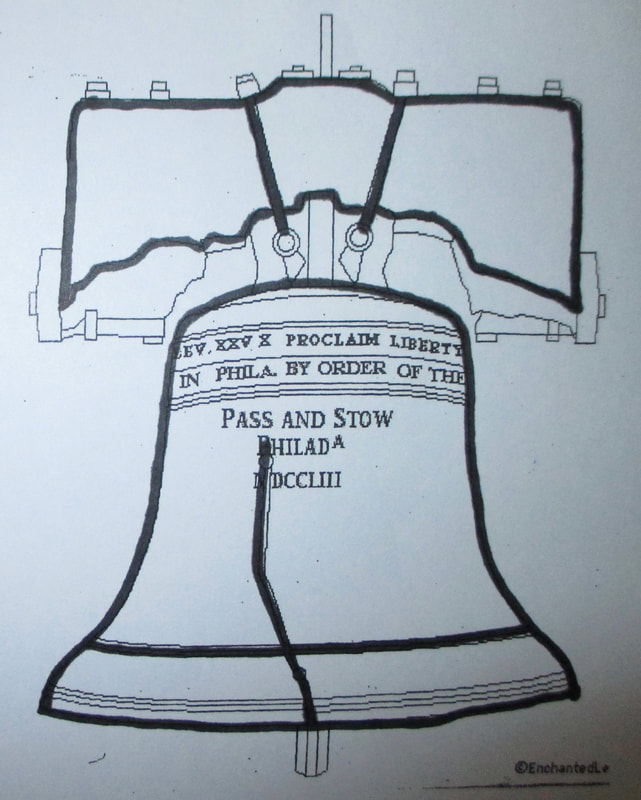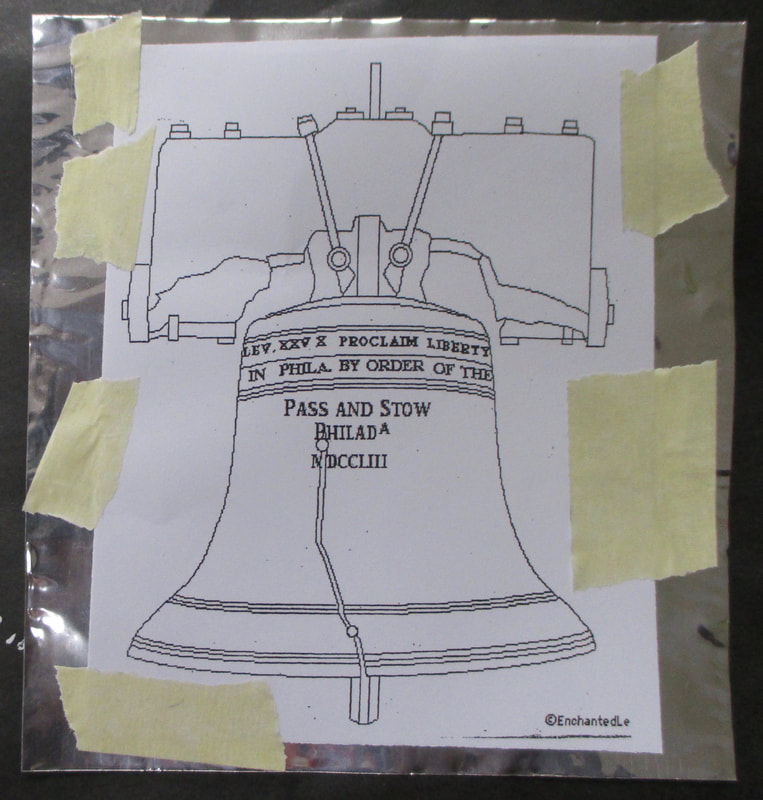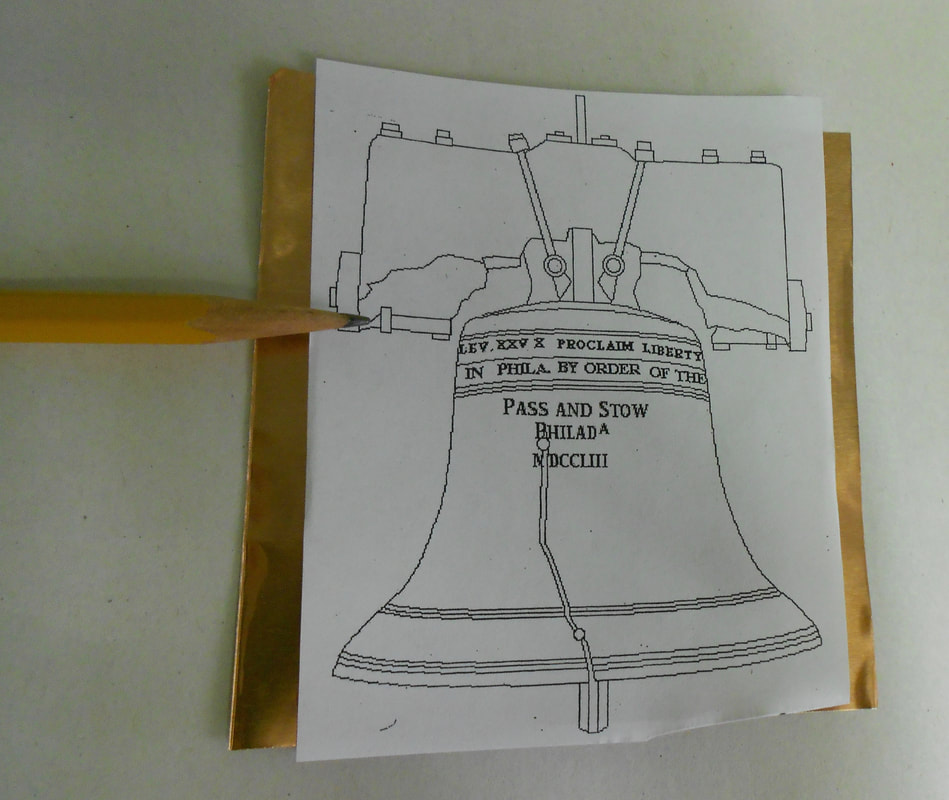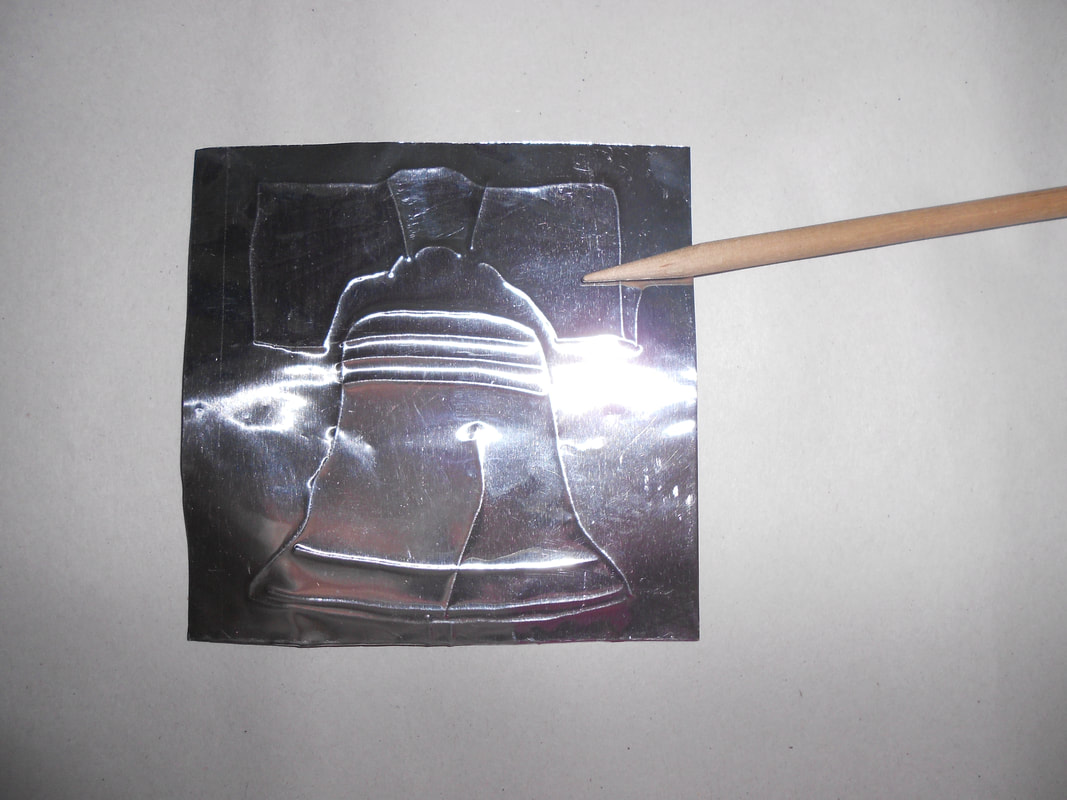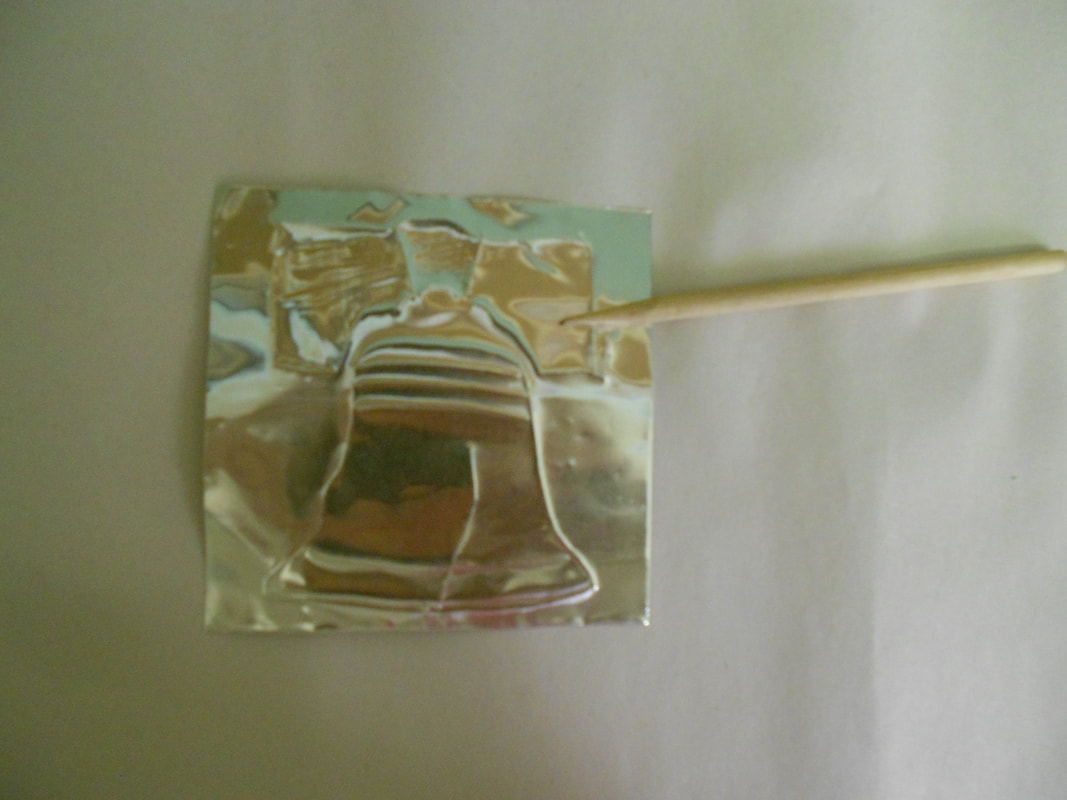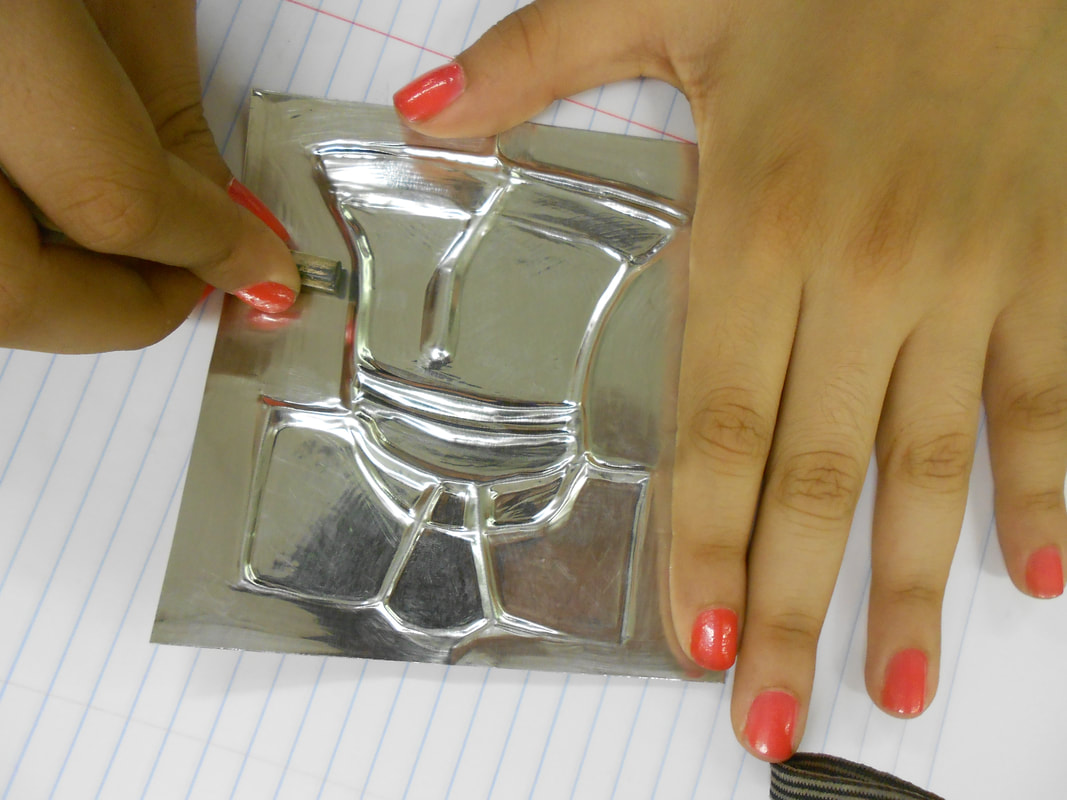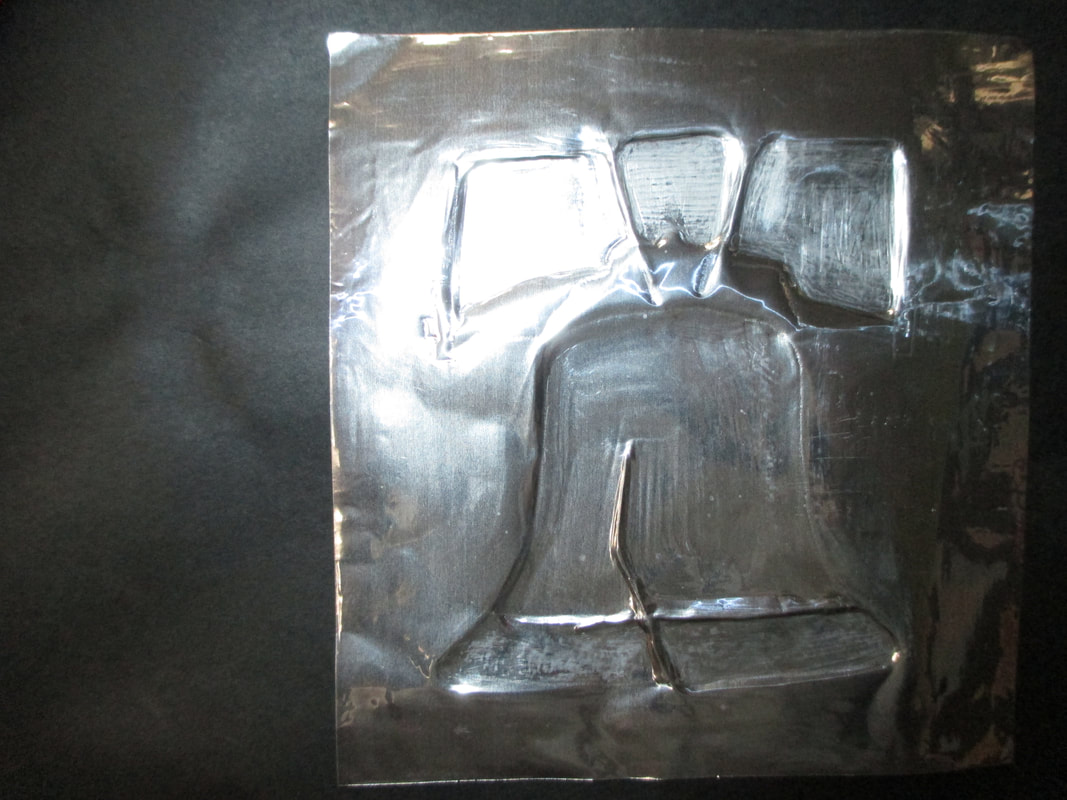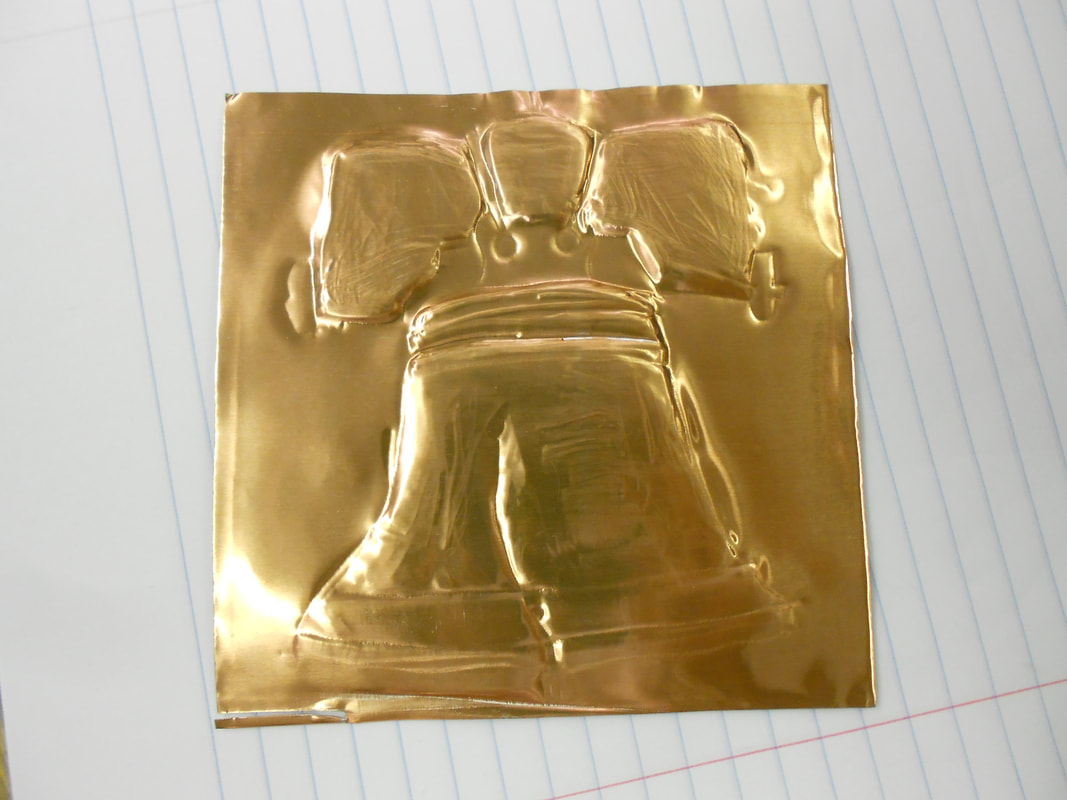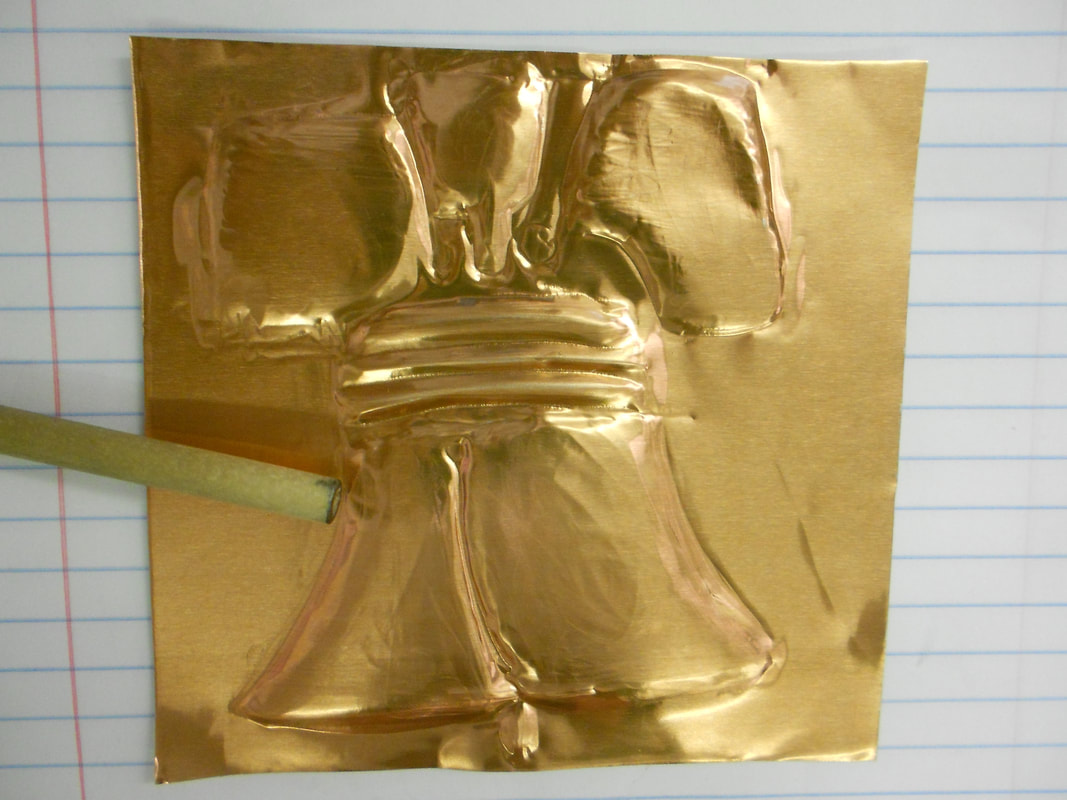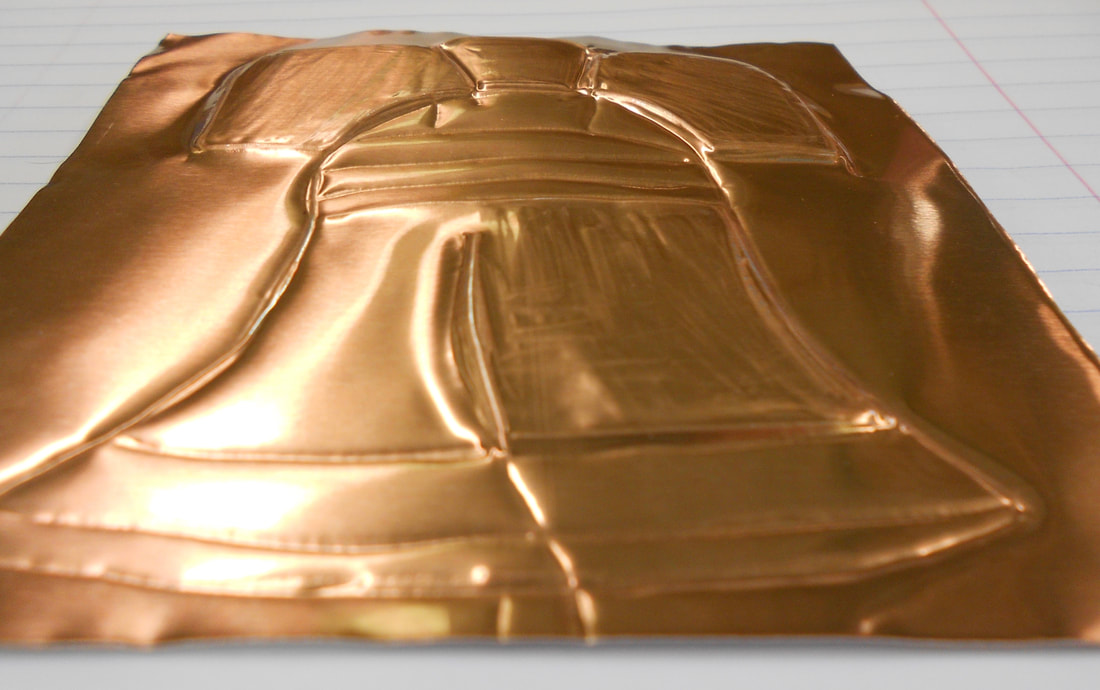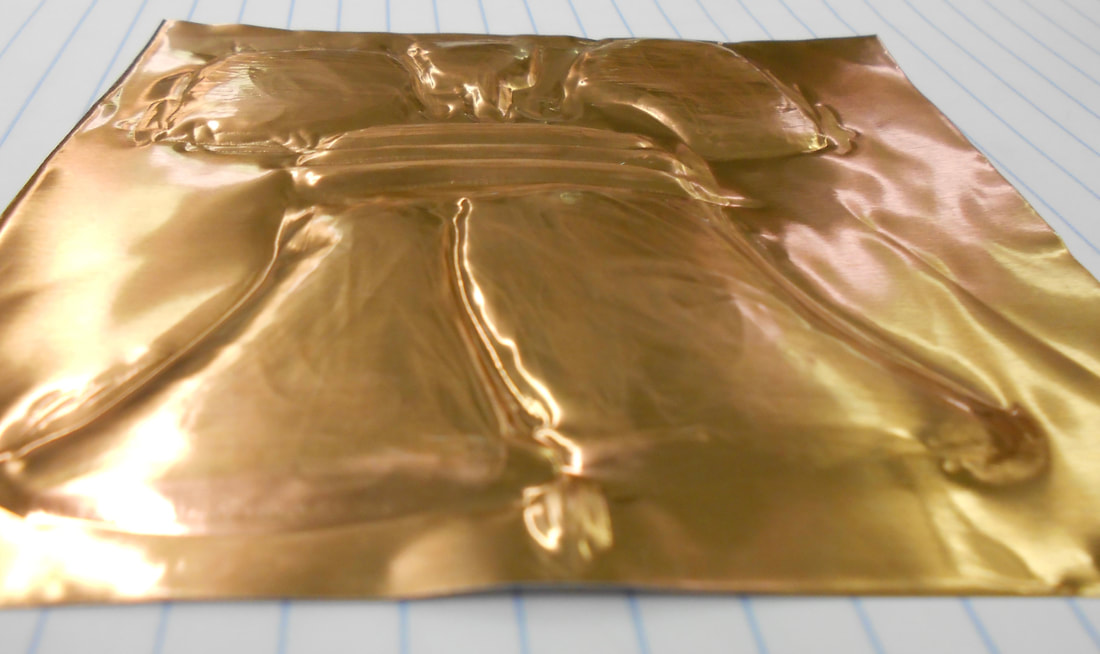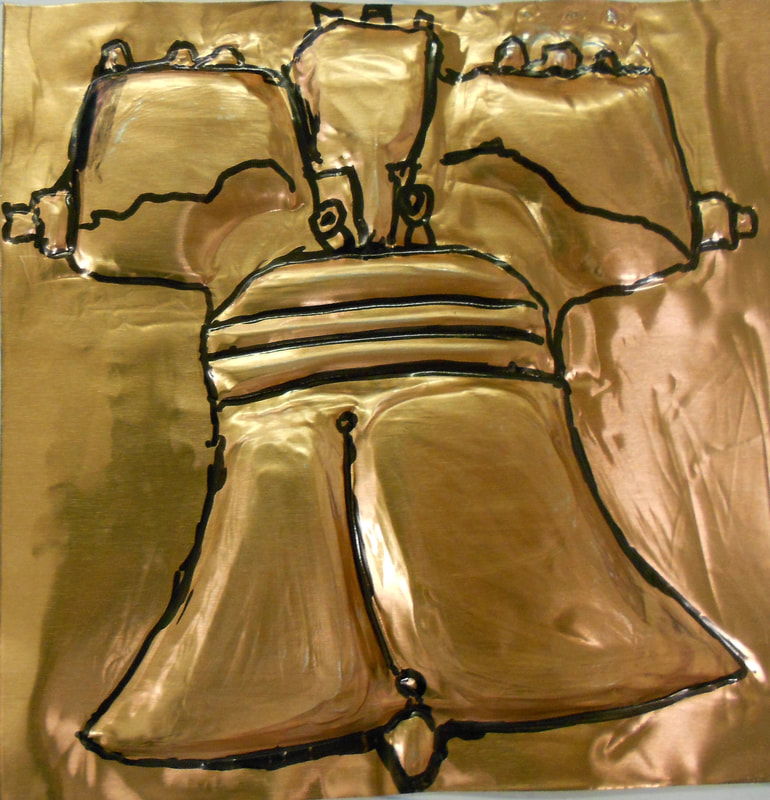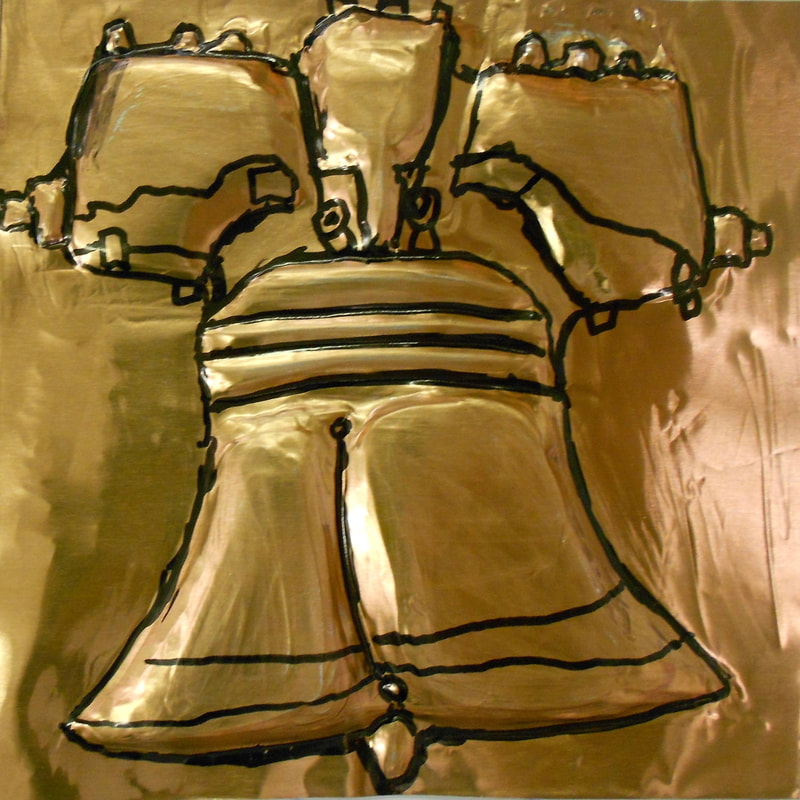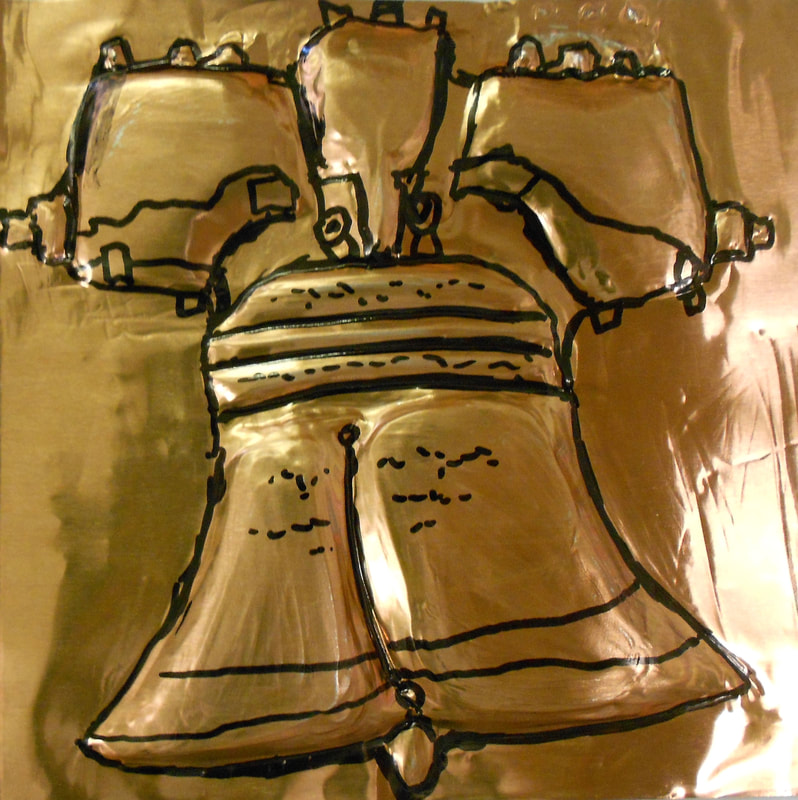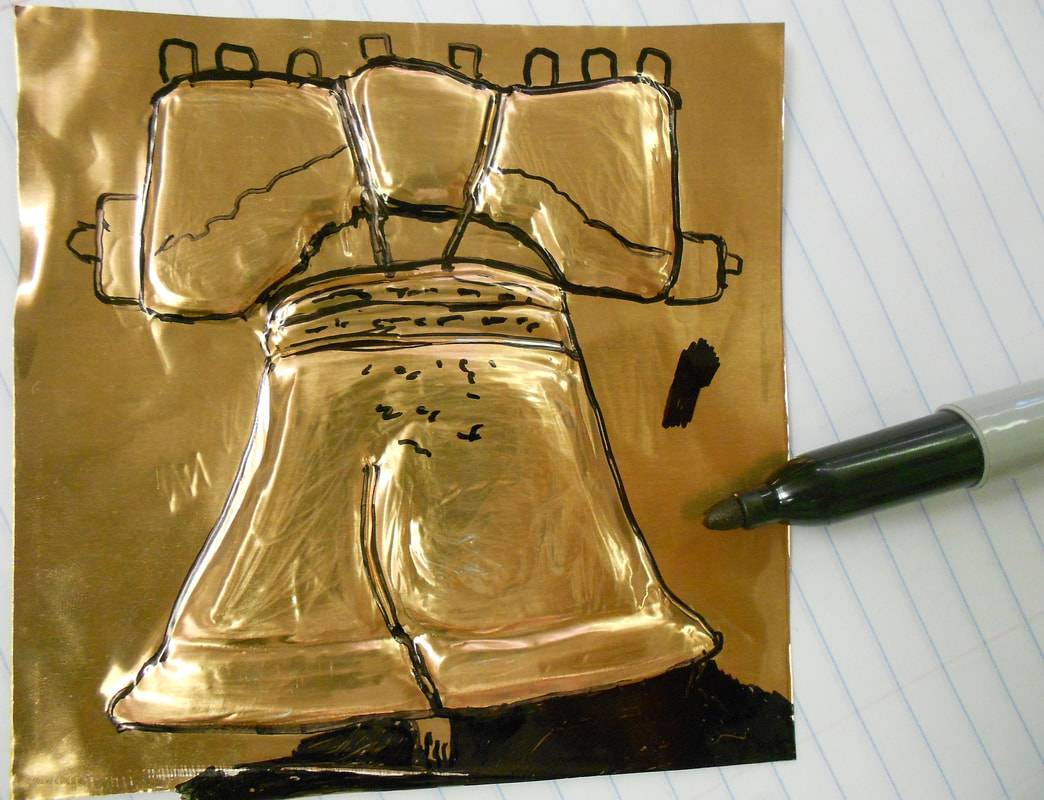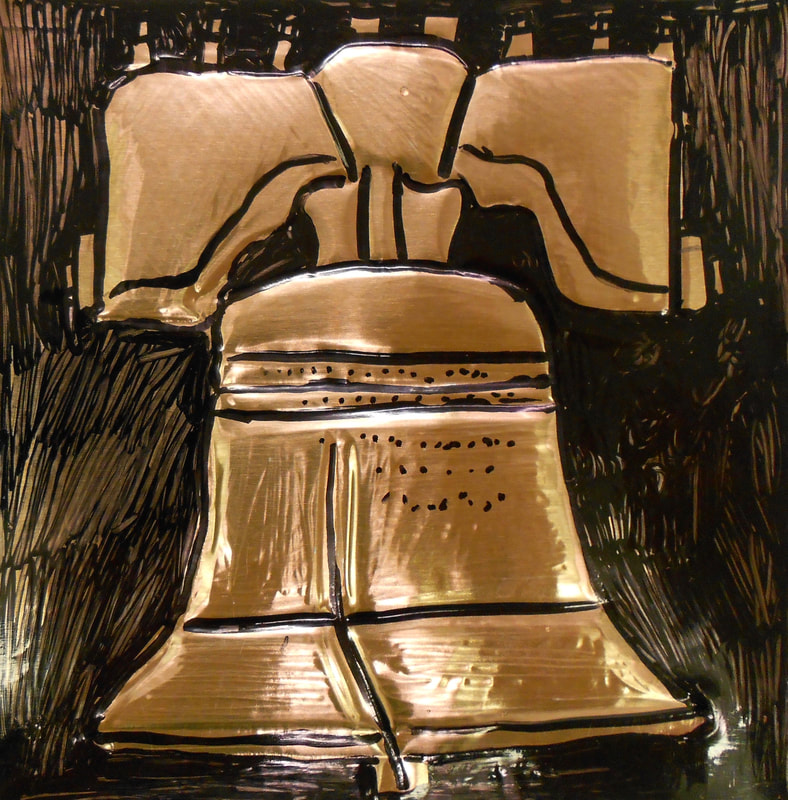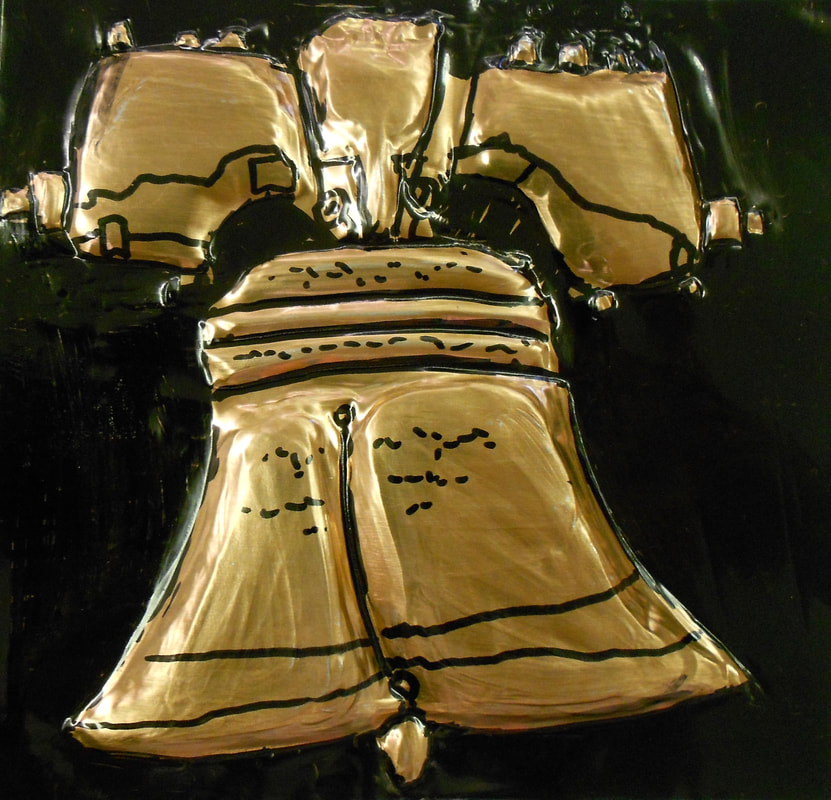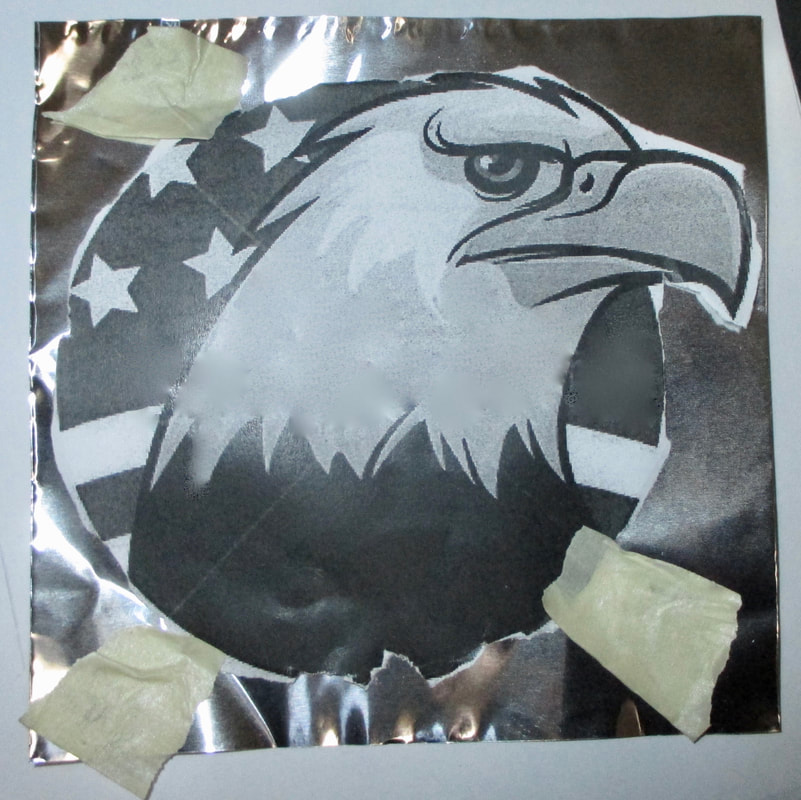American symbols - metal bas relief sculpture
The following is a 5th grade art lesson on how to make a bas relief metal sculpture. The lesson uses TheLiberty Bell, an American symbol.
Scroll down to find:
Scroll down to find:
- examples of American symbols + the Liberty Bell
- step-by-step instructions with pictures of the project
- a lesson plan (including California State Visual Art Standards)
the liberty bell - interesting facts
- The Liberty Bell is an important and famous symbol of American independence (freedom).
- It useate House (now known as Independence Hall).
- The bell was ordered from the London firm of Lester and Pack (which is known as the Whitechapel Bell Foundry today) in 1752.
- The Liberty Bell is 25% tin, 70 % copper, and it also has small amounts of gold, silver, arsenic, zinc and lead.
- The main crack is 24.5 inches long and .5 of an inch wide. There are also many small hairline cracks as well.
- The Liberty Bell is 12 feet in circumference (of the lip) and 3 feet tall.
- The Liberty Bell cracked beyond repair on February 23, 1846. While the bell doesnot ring physically, its message of liberty still rings out to many.
- The Liberty Bell'sclapper has been immobilized since 1915. Even though the bell can't ring with the clapper, it has been struck with a mallet and the sound recorded.
- Cost of the bell including insurance and shipping was 150 Pounds 13 shillings 8 pence.
- The bell was last rung on February 23, 1846 for George Washington's birthday. On January 1, 1976 the Liberty Bell was moved to its new home at the Liberty Bell Pavilion on Market Street near Independence Hall.
- Today the company is known as Whitechapel Bell Foundry. The original cast contained the following words from Leviticus 25:10 "Proclaim LIBERTY throughout all the land unto all the inhabitants thereof." The first bell cracked when it first rang. It was recast by John Pass and John Stow twice.
reference
|
A close-up of the Liberty Bell inscription.
The Bell's First Note by Jean Leon Gerome Ferris L
|
The Liberty Bell appeared on a commemorative coin in 1926 to mark the sesquicentennial of American independence. Its first use on a circulating coin was on the reverse side of the Franklin half dollar, struck between 1948 and 1963.[It also appeared on the Bicentennial Design of the Eisenhower half dollar, superimposed against the moon.[101]
|
step-by-step visual instructions
objective
Students will have knowledge of The Liberty Bell, a National Symbol. They will gain knowledge of a bas relief sculpture, as well as how to make one in metal.
materials
- wooden dowels or sticks
- copies of the Liberty Bell in the size of the metal pieces cut (simple line drawing)
- notebook, newspapers, papers (for padding under metal when burnishing)
- copies of the Liberty Bell in the size of the metal pieces cut (simple line drawing)
- notebook, newspapers, papers (for padding under metal when burnishing)
activity
1. NOTE: the metal is thin - students should handle with care not to bend metal, nor get a paper-cut- like cut on their fingers.
2. See photos above for steps.
3. Show examples of images.
4. Make copies of a simple illustration of the Liberty Bell for tracing.
5.. Each student should work on a stack of papers of a notebook for cushioning - not on a flat surface, like a desk.
6. IMPORTANT: After outlining, Start GENTLY burnishing on the metal back side.
7. Work on small areas at a time.
8. Use permanent markers as the last step.
9. Each student will end with a Bas Relief project.
2. See photos above for steps.
3. Show examples of images.
4. Make copies of a simple illustration of the Liberty Bell for tracing.
5.. Each student should work on a stack of papers of a notebook for cushioning - not on a flat surface, like a desk.
6. IMPORTANT: After outlining, Start GENTLY burnishing on the metal back side.
7. Work on small areas at a time.
8. Use permanent markers as the last step.
9. Each student will end with a Bas Relief project.
clean-up
-There is not much clean-up involved with this project.
- Put notebooks or papers used for cushioning put away or collected.
- Instruct students to take a sheet of paper, with their names on it, fold in 1/2 + place metal inside.
- Have students assigned to carefully collect the metal projects.
- Assign a student to collect the dowel.
- Put notebooks or papers used for cushioning put away or collected.
- Instruct students to take a sheet of paper, with their names on it, fold in 1/2 + place metal inside.
- Have students assigned to carefully collect the metal projects.
- Assign a student to collect the dowel.
vocabulary
- Balance - Visual equilibrium in a composition; achieved by organizing the weight and attention of all elements in an artwork. Types of balance are symmetrical, asymmetrical, radial, and crystallographic.
- Contour drawings - The drawing of an object as though the drawing tool is moving along the edges and ridges of the form.
- Form - A three-dimensional volume or the illusion of three dimensions (related to shape, which is twi-dimensional); the particular characteristics of the visual elements of a work of art (as distinguished from its subject matter or content).
- Harmony - The principle of design that combines elements in a work of art to emphasize similarities of separate but related parts.
- Proportion - The size relationships of one part to the whole and of one part to another.
- Scale - The size of an object or image that is measured by its relationship to the other objects and images that are recognized for their normal or actual size.
- Sculpture - A three-dimensional work of art either in the round( to be viewed from all sides) or in bas relief (low relief in which figures protrude slightly from the background).
- Space - An area in which objects or images can exist.
- Shape - A two-dimensional are or plane that may be open or closed, free-form or geometric. It can be found in nature or is made by humans.
- Unity - Total visual effect in a composition achieved by the careful blending of the elements of art + the principles of design.
variation
- use other National Symbols (eg. bald eagle, statue of liberty)
- use silver or bronze colored metal for project
- colored background, other than black
- use silver or bronze colored metal for project
- colored background, other than black
ca state visual art standards
1.0 ARTISTIC PERCEPTION
Develop Perception Skills and Visual Arts Vocabulary
1.1 Identify and describe the principles of design in visual arts compositions, emphasizing unity and harmony.
3.0 HISTORICAL and CULTURAL CONTENT
Role and Development of the Visual Arts
3.3 Identify and compare works of art from various regions of the United States.
Make Informed Judgements
4.3 Develop and use specific criteria as individuals in groups to assess works of art.
Develop Perception Skills and Visual Arts Vocabulary
1.1 Identify and describe the principles of design in visual arts compositions, emphasizing unity and harmony.
3.0 HISTORICAL and CULTURAL CONTENT
Role and Development of the Visual Arts
3.3 Identify and compare works of art from various regions of the United States.
Make Informed Judgements
4.3 Develop and use specific criteria as individuals in groups to assess works of art.

